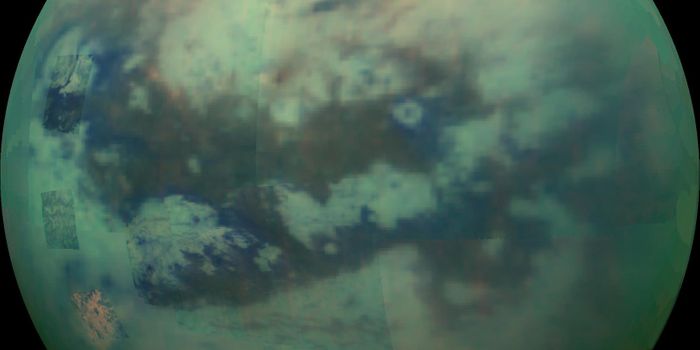Strontium isotope abundances shed light on early ocean acidification
Scientists from Northwestern have published new findings on the factors that triggered the oceanic anoxic event (OAE) 1a in the Early Cretaceous Period about120 million years ago. The unprecedented study, reported in the journal Geology, used stable strontium isotope measurements in nannoplankton fossils in order to analyze ancient ocean anoxic events.
"We go back in time to study greenhouse periods because Earth is headed toward another greenhouse period now," said first author Jiuyuan Wang. "The only way to look into the future is to understand the past."
A family of marine nannoplankton went extinct during the OAE1a, so measuring the calcium and strontium isotope abundances in their fossils offers a glimpse into that past. To do so, Wang, along with Northwestern professors of earth and planetary sciences Andrew Jacobson, Bradley Sageman and Matthew Hurtgen, explored a 1,600-meter-long sediment core taken from the mid-Pacific Mountains.
They parsed through the sediment in order to detect calcium carbonates, which would allow them to understand what the earth’s climate was like during the Early Cretaceous. But because calcium carbonates have their limitations, the team also analyzed stable isotopes of strontium to get a clearer idea of what was going on.
"Calcium isotope data can be interpreted in a variety of ways," Jacobson said. "Our study exploits observations that calcium and strontium isotopes behave similarly during calcium carbonate formation, but not during alteration that occurs upon burial. In this study, the calcium-strontium isotope 'multi-proxy' provides strong evidence that the signals are 'primary' and relate to the chemistry of seawater during OAE1a."
"Stable strontium isotopes are less likely to undergo physical or chemical alteration over time," Wang added. "Calcium isotopes, on the other hand, can be easily altered under certain conditions."

The researchers concluded that the long-term eruptions (read: 7 million years) of the Ontong Java Plateau large igneous province (LIP) released tons of carbon dioxide into the atmosphere and ultimately creating the conditions for OAE1a. "There is a direct link between ocean acidification and atmospheric CO2 levels," Jacobson said. "Our study provides key evidence linking eruption of the Ontong Java Plateau LIP to ocean acidification. This is something people expected should be the case based on clues from the fossil record, but geochemical data were lacking."
This geochemical data will help us understand how our oceans will continue to change during the greenhouse period that we are currently experiencing. The authors warn that though the planet has experienced significant greenhouse warming before, these past periods occurred over tens of thousands to millions of years, not less than 200 years, as is our current situation.
Sources: Geology, Science Daily








